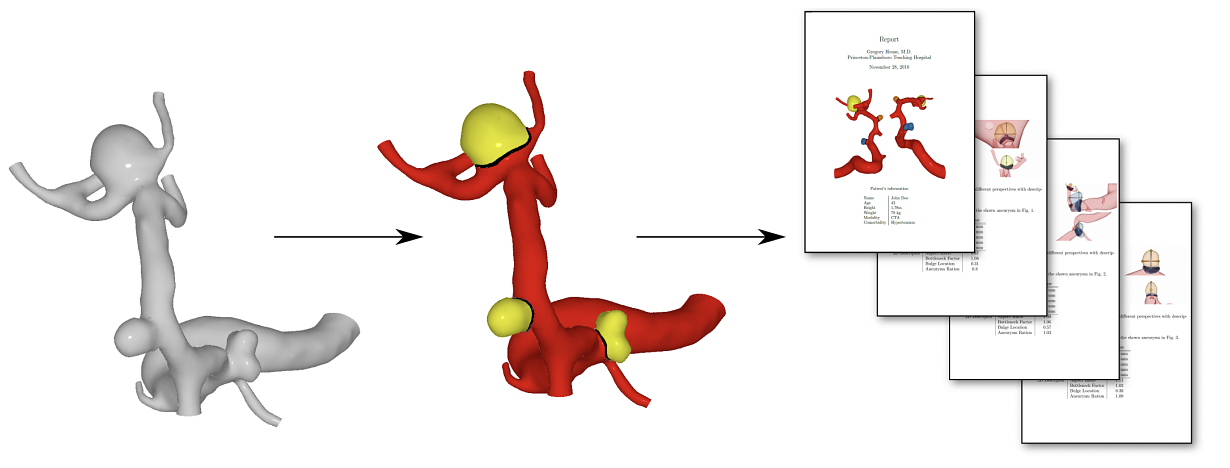Computer Graphics Forum
A Geometric Optimization Approach for the Detection and Segmentation of Multiple Aneurysms

We present a method for detecting and segmenting aneurysms in blood vessels that facilitates the assessment of risks associated with the aneurysms. The detection and analysis of aneurysms is important for medical diagnosis as aneurysms bear the risk of rupture with fatal consequences for the patient. For risk assessment and treatment planning, morphological descriptors, such as the height and width of the aneurysm, are used. Our system enables the fast detection, segmentation and analysis of single and multiple aneurysms. The method proceeds in two stages plus an optional third stage in which the user interacts with the system. First, a set of aneurysm candidate regions is created by segmenting regions of the vessels. Second, the aneurysms are detected by a classification of the candidates. The third stage allows users to adjust and correct the result of the previous stages using a brushing interface. When the segmentation of the aneurysm is complete, the corresponding ostium curves and morphological descriptors are computed and a report including the results of the analysis and renderings of the aneurysms is generated. The novelty of our approach lies in combining an analytic characterization of aneurysms and vessels to generate a list of candidate regions with a classifier trained on data to identify the aneurysms in the candidate list. The candidate generation is modeled as a global combinatorial optimization problem that is based on a local geometric characterization of aneurysms and vessels and can be efficiently solved using a graph cut algorithm. For the aneurysm classification scheme, we identified four suitable features and modeled appropriate training data. An important aspect of our approach is that the resulting system is fast enough to allow for user interaction with the global optimization by specifying additional constraints via a brushing interface.
More Information
Citation
BibTex
@article{bib:lawonn:2019,
author = { Lawonn, Kai and Meuschke, Monique and Wickenhoefer, Ralph and Preim, Bernhard and Hildebrandt, Klaus },
title = { A Geometric Optimization Approach for the Detection and Segmentation of Multiple Aneurysms },
journal = { Computer Graphics Forum },
volume = { 38 },
year = { 2019 },
pages = { 413--425 },
doi = { 10.1111/cgf.13699 },
dblp = { journals/cgf/LawonnMWPH19 },
url = { https://publications.graphics.tudelft.nl/papers/100 },
}